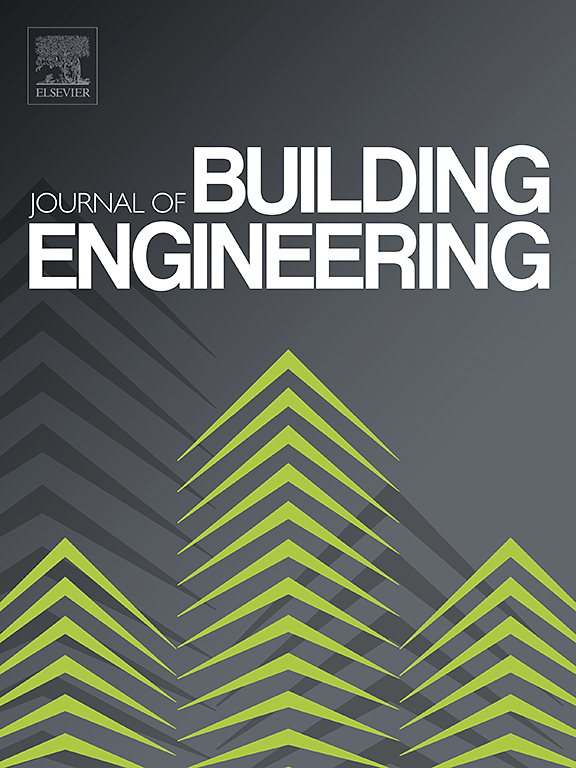水泥浆生产中碱式氧炉炉渣水碳化废水的闭环循环利用
IF 6.7
2区 工程技术
Q1 CONSTRUCTION & BUILDING TECHNOLOGY
引用次数: 0
摘要
水碳化(AC)处理是一种很有前景的方法,可提高富含钙和镁的固体废物(如碱性氧气炉渣(BOFS))的胶凝活性,同时减少碳排放。然而,在 AC 处理过程中产生的碳化滤液(CF)对环境造成了巨大挑战,限制了其大规模应用。因此,本文探讨了在水泥浆生产过程中回收利用碳化滤液作为管理 AC 废水的一种策略的可行性。与使用自来水 (TW) 和碳酸水 (CW) 制备的水泥浆相比,本研究考察了碳酸钙对水泥浆(纯水泥浆和掺入 10% 原水或碳酸化 BOFS 的水泥浆)的物理机械性能、水化行为和微观结构的影响。结果表明,碳酸化溶液(CF 和 CW)可促进水泥中铝酸盐相的水化,CW 的效果更为明显。CF 中的固体悬浮物,尤其是内沸石,限制了浆体基质中硅酸钙水合物(C-S-H)的生长空间,导致形成箔状 II 型 C-S-H,降低了抗压强度。然而,碳化 BOFS(C-BOFS)中的方解石晶体提供了额外的成核位点,可加速 CF 型浆料中的水泥水化,并通过促进形成更多纤维状 C-S-H 来减轻强度损失。此外,添加超塑化剂可降低 C-BOFS-CF 浆料中的颗粒间作用力,进一步增强强度发展,使 28 天强度与对照样本(OPC-TW 浆料)相当。本文章由计算机程序翻译,如有差异,请以英文原文为准。

A closed-loop recycling of wastewater derived from aqueous carbonation of basic oxygen furnace slag in cement paste production
Aqueous carbonation (AC) treatment is a promising method for enhancing the cementitious activity of Ca- and Mg-rich solid wastes, such as basic oxygen furnace slag (BOFS), while also reducing carbon emissions. However, the carbonated filtrate (CF) solution generated during the AC process poses significant environmental challenges and limits its large-scale application. This paper, therefore, explores the feasibility of recycling CF in cement paste production as a strategy for managing AC wastewater. The study examines the impact of CF on the physico-mechanical properties, hydration behavior and microstructure of cement pastes (pure and blended with either 10% as-received or carbonated BOFS), compared to those prepared with tap water (TW) and carbonated water (CW). The results indicate that carbonated solutions (CF and CW) promote the hydration of aluminate phase in cement, with a more pronounced effect observed for CW. The solid suspensions in CF, particularly nesquehonite, restrict the growth space for calcium silicate hydrates (C-S-H) in the paste matrix, resulting in the formation of foil-like Type II C-S-H and lowering compressive strength. However, the additional nucleation sites provided by calcite crystals in carbonated BOFS (C-BOFS) accelerate cement hydration in CF-based pastes and mitigate strength loss by promoting the formation of more fibrillary C-S-H. Furthermore, the addition of a superplasticizer reduces interparticle forces in the C-BOFS-CF paste, further enhancing strength development and achieving a 28-day strength comparable to that of the control sample (OPC-TW paste).
求助全文
通过发布文献求助,成功后即可免费获取论文全文。
去求助
来源期刊

Journal of building engineering
Engineering-Civil and Structural Engineering
CiteScore
10.00
自引率
12.50%
发文量
1901
审稿时长
35 days
期刊介绍:
The Journal of Building Engineering is an interdisciplinary journal that covers all aspects of science and technology concerned with the whole life cycle of the built environment; from the design phase through to construction, operation, performance, maintenance and its deterioration.
 求助内容:
求助内容: 应助结果提醒方式:
应助结果提醒方式:


